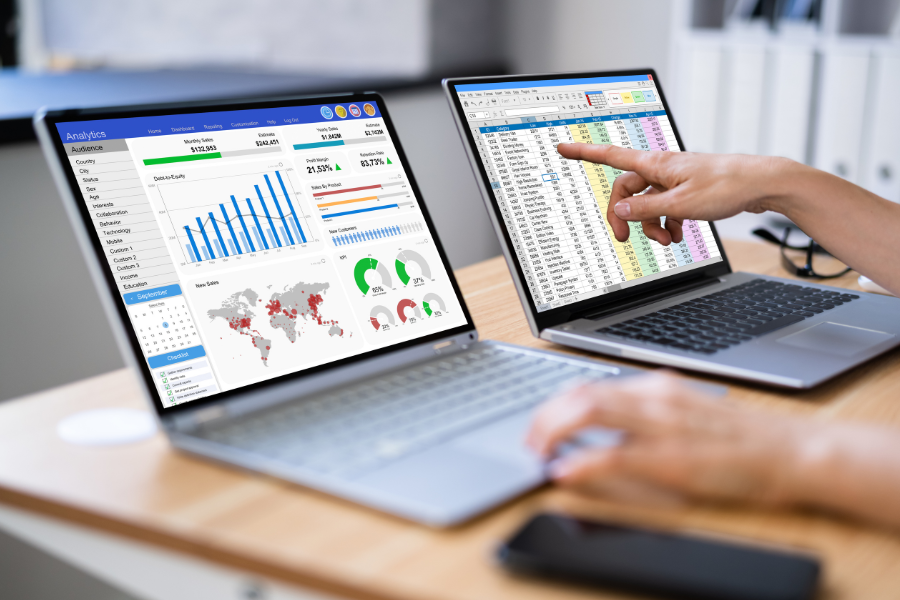As healthcare providers, you know the importance of having the right equipment, technology, and services to enhance the quality of patient care. However, finding the right vendors to provide these services can be an overwhelming task.
This is why a well-crafted healthcare request for proposal (RFP) is necessary for organizational success. An RFP is a document that outlines your healthcare organization’s needs and invites vendors to submit their proposals for meeting those needs.
What Is a Request for Proposal (RFP)?
Healthcare RFPs are essential for organizations because they provide a structured way to compare products or services and ensure that the organization gets the best possible solution for their needs. When you issue an RFP, potential vendors who are submitting a proposal can address the specific requirements of the organization. These proposals can range from simple to complex, depending on the nature and complexity of the project.
Why is an RFP Necessary?
One of the benefits of the RFP process for healthcare organizations is that it helps to ensure that the vendors who submit proposals have a clear understanding of the organization’s needs and requirements. This means that the solutions proposed are tailored to the organization’s specific requisites, which can help to ensure that the final product or service is a good fit for the organization.
Another benefit of the RFP process in the healthcare industry is that it provides a level playing field for vendors. By outlining the evaluation criteria in the RFP document, vendors know exactly what is required of them and can tailor their proposals accordingly. This helps to make certain that all vendors are judged on the same criteria, ensuring fairness and transparency in the selection process. It also gives vendors incentive to be specific about how their solutions suite is the best fit for each need.
Key Steps in the RFP Process for Healthcare
You may already have reviewed healthcare RFP examples, or even explored RFP software solution options, but the following are basic steps healthcare providers can use when developing effective RFPs.
1. Define Your Goals and Objectives
The first step to creating an RFP is understanding your organization’s objectives. You need to determine specific, yet realistic goals for the project. Whether you are looking for a new electronic health record system or a medical billing service, you need to answer the questions: Are your goals specific enough? What gap in performance are you looking to resolve with the project? By defining these objectives, you know what to look for in vendors’ proposals.
2. Develop the RFP Document
With your well-articulated objectives in mind, you can develop a comprehensive RFP document that provides background information about your organization and outlines the details of your project. The document should include instructions on how vendors should format their proposals, timelines for responses, vendor background information you wish to have, confidentiality notices, and details on how you will evaluate proposals.
RFP Evaluation criteria are typically categorized by Functional Requirements (business related), and Non-Functional Requirements (technical and security related). The Functional Requirements address specific processes or capabilities that are needed to support the mission of the organization. Using a medical billing system as an example, this could include details addressing claims processing, reporting, A/R Management, and collections. The Non-Functional Requirements in this same scenario could include user access and permissions, encryption specifications, throughput and storage capacity, and system hosting specifications. It is important to be as specific as possible when detailing all requirements.
Pricing is a key element of the RFP and decision-making process and as such specificity is key. For a typical electronic health record/medical billing system scenario, the pricing should clearly identify costs associated with software, hardware, licensing, hosting, interfaces, implementation, and training. Ensure that the vendor clearly identifies costs that are “one-time” capital expenditures, vs. “annual” operating expenditures. Also ensure that the vendor clearly distinguishes what capabilities are included in the “core” pricing model, as well as functions that are only available as an “add-on” expense. Considering the wide degree of variation between vendors regarding how their pricing models are represented, it is recommended that a template is included within the RFP document that provides a consistent structure for cost information.
The RFP should also provide an opportunity for the vendor to provide references. Ideally these would be organizations that are similar in size and specialty to your own, that received identical services from the vendor you are evaluating. Ensure the vendor provides contact information for each reference along with the assurance that each contact is willing to openly discuss the services received.
3. Identify Potential Vendors
The next step is to identify potential vendors that are most likely to meet your organization’s needs. There are different ways to identify vendors, such as attending trade shows, searching online directories, or getting recommendations from colleagues or stakeholders. When selecting vendors, pay attention to their experience, service offerings, pricing, and reputation. You want to ensure that the vendor has the capacity to deliver quality work within your organization’s timeline and budget.
4. Submit an RFP to Solicit Bids
Once you have identified potential vendors, you can send the RFP. Ensure you have canvassed enough vendors to have enough options to choose from. The submission deadline should be long enough to give potential vendors the opportunity to evaluate the RFP and put together a well-crafted proposal. You should also factor in the time needed to review the proposals, schedule vendor interviews, and choose the best vendor.
5. Review and Evaluate the RFP Response
Now comes the step in which you will review all the proposals (RFP responses), evaluate their strengths and weaknesses, and select the top two or three candidates (i.e., “the shortlist”). You can evaluate the proposals using a scoring system or a ranking system based on the vendor’s ability to meet functional and non-functional requirements, experience, pricing, service delivery timelines, and so on. It is essential to be objective in your evaluation to ensure you make a decision that serves the best interests of your organization.
Up until this point the vendors have “stated” what they are capable of. Now it is time to give the short-list candidates an opportunity to “perform” in structured scenarios known as “demos.” Time limitations typically prohibit you from seeing everything the vendor is capable of during the demo phase. Therefore, it is imperative that you provide specific actions that you wish to see demonstrated that are most meaningful regarding the performance gap you are attempting to remediate.
Also, ensure your “stakeholders” (i.e., the people who will be using the system on a daily basis) are part of the demo review and feedback process to obtain a “front-line” perspective on the product. Demos can be scored or ranked similar to the RFP responses and are typically one of the last steps in the selection process.
Tips for Developing a Successful RFP
Drafting an RFP may seem like an overwhelming undertaking, but it is critical that it is well-written to set both you and your vendors up for success. The following tips will help your organization develop effective RFPs.
Clearly State Your Goals
Before starting your RFP, identify your goals. What outcomes are you looking for? What problems are you trying to solve? What areas of your healthcare operation do you want to improve? Starting with well-defined goals is a crucial first step toward effectively vetting vendors and evaluating their proposals.
Develop a Comprehensive Scope
Be sure to include the details about what the organization wants the vendor to deliver. By providing a detailed scope of work (SOW) in your RFP, the vendor will have a better understanding of your needs, which increases the likelihood of a successful collaboration. Always remember, if your scope of work is too broad, you may miss proposals that offer specific skill sets and cater to specialized audiences.
Ask Relevant Questions
By including relevant questions in your RFP, your organization can obtain valuable information to help you identify the right vendor. Questions should be tailored to your particular evaluation criteria, such as vendor security questionnaires for regulatory compliance (including local or state regulations), technical qualifications, and the scope of goods and services deliverables.
Define the Evaluation Process
Defining the evaluation process for the RFP creates a level of structure that helps ensure vendors are evaluated on merit, rather than whim and thus reliable. The right evaluation process should assess the potential of collaborating vendors based on a set of metrics and factors such as the ability to meet functional and non-functional requirements, reputation, experience, service quality, and price.
Establish a Timeline
Every organization comes with strict deadlines and healthcare is no exception. Setting up a timeline for your RFP ensures the team is aligned and understands each stage of the process, from draft, review and set-up to proposal review, vendor selection, and agreement sign-off.
It is also helpful to definitively set every single milestone, from the issue date to the submission deadline. A well-planned timeline provides the discipline needed to foster an environment of clear expectations and accountability.
Summary: RFP Process in Healthcare
Developing an effective RFP requires time, diligence, and collaboration amongst stakeholders. Creating a well-constructed RFP will allow you to utilize a tangible evaluation methodology that ultimately positions you for a successful vendor partnership that best meets your needs. By clearly defining your goals and establishing a robust evaluation process, you set a firm foundation that helps you avoid working with incompatible vendors and the resulting disconnects that would bring about poor outcomes.
Simplify the RFP Process with Help from Medical Advantage Consultants
As specialists in practice operations, Medical Advantage can provide valuable guidance to help remove complexity and streamline the process for the most productive healthcare RFPs. Reach out to learn more about how our experienced consultants can help with RPF development and provide consultation that will transform your practice and optimize your operations.





